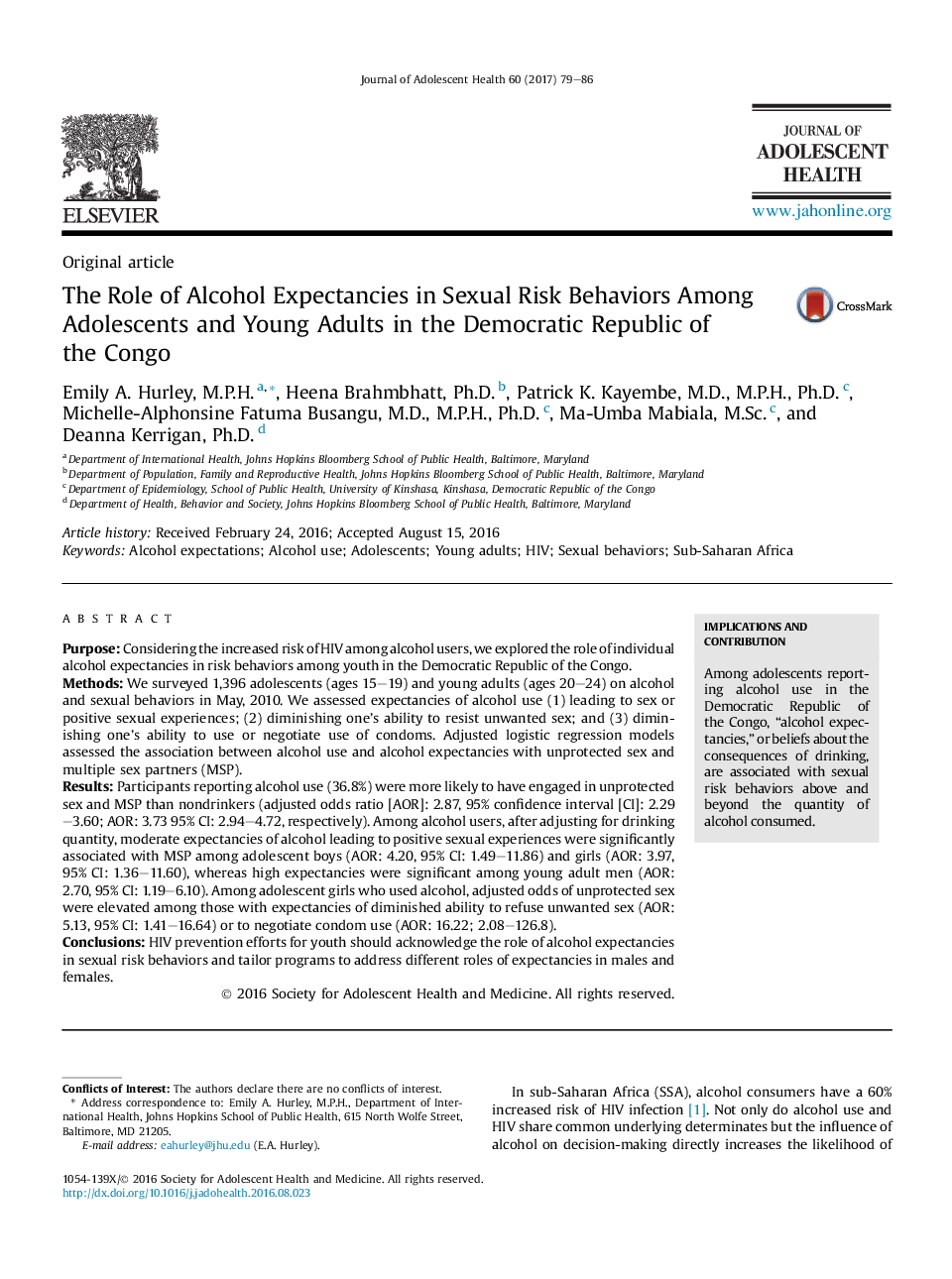| Article ID | Journal | Published Year | Pages | File Type |
|---|---|---|---|---|
| 5121373 | Journal of Adolescent Health | 2017 | 8 Pages |
PurposeConsidering the increased risk of HIV among alcohol users, we explored the role of individual alcohol expectancies in risk behaviors among youth in the Democratic Republic of the Congo.MethodsWe surveyed 1,396 adolescents (ages 15-19) and young adults (ages 20-24) on alcohol and sexual behaviors in May, 2010. We assessed expectancies of alcohol use (1) leading to sex or positive sexual experiences; (2) diminishing one's ability to resist unwanted sex; and (3) diminishing one's ability to use or negotiate use of condoms. Adjusted logistic regression models assessed the association between alcohol use and alcohol expectancies with unprotected sex and multiple sex partners (MSP).ResultsParticipants reporting alcohol use (36.8%) were more likely to have engaged in unprotected sex and MSP than nondrinkers (adjusted odds ratio [AOR]: 2.87, 95% confidence interval [CI]: 2.29-3.60; AOR: 3.73 95% CI: 2.94-4.72, respectively). Among alcohol users, after adjusting for drinking quantity, moderate expectancies of alcohol leading to positive sexual experiences were significantly associated with MSP among adolescent boys (AOR: 4.20, 95% CI: 1.49-11.86) and girls (AOR: 3.97, 95% CI: 1.36-11.60), whereas high expectancies were significant among young adult men (AOR: 2.70, 95% CI: 1.19-6.10). Among adolescent girls who used alcohol, adjusted odds of unprotected sex were elevated among those with expectancies of diminished ability to refuse unwanted sex (AOR: 5.13, 95% CI: 1.41-16.64) or to negotiate condom use (AOR: 16.22; 2.08-126.8).ConclusionsHIV prevention efforts for youth should acknowledge the role of alcohol expectancies in sexual risk behaviors and tailor programs to address different roles of expectancies in males and females.
